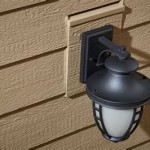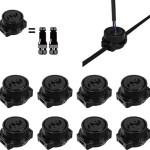```html
How to Apply Makeup for an Outdoor Photoshoot
Outdoor photoshoots present unique challenges and opportunities for makeup application. Unlike studio settings, natural light can be both flattering and unforgiving, highlighting imperfections while simultaneously washing out colors. Therefore, understanding how to apply makeup specifically tailored for outdoor photography is crucial for achieving desired results in the final images. This article will explore key considerations and techniques for optimizing your makeup application for outdoor photoshoots, ensuring a polished and photogenic appearance.
Key Point 1: Prioritizing a Flawless Base
The foundation is the cornerstone of any successful makeup look, and even more so when facing the scrutiny of a camera lens outdoors. The goal is to create a smooth, even complexion that appears natural and healthy. Selecting the right products and employing proper application techniques are central to this process.
Choosing the Right Foundation: Opt for a foundation that provides medium, buildable coverage. Heavy foundations can appear cakey in natural light, while sheer foundations may not offer sufficient coverage to address minor imperfections. Consider a liquid or cream foundation with a natural or satin finish. Matte foundations can sometimes look flat and lifeless outdoors, particularly in overcast conditions. The foundation should match the individual's skin tone perfectly, tested in natural daylight to ensure a seamless blend. Undertones are crucial; a foundation with the wrong undertone can make the skin look ashy or orange. Take several samples and test them on the jawline in natural light to find the perfect match.
Primer is Essential: Before applying any foundation, a primer is non-negotiable. Primer creates a smooth canvas, helps to control oil production, and extends the wear time of the makeup, which is particularly important during outdoor shoots where environmental factors like humidity or wind can affect the makeup's longevity. Choose a primer based on skin type: a mattifying primer for oily skin, a hydrating primer for dry skin, or a pore-minimizing primer for enlarged pores.
Application Techniques: Apply foundation in thin, even layers using a damp makeup sponge or a stippling brush. A damp sponge helps to blend the foundation seamlessly into the skin, preventing streaks and ensuring a natural finish. Begin at the center of the face and blend outwards, paying close attention to the hairline and jawline to avoid harsh lines. Avoid applying too much product at once; build coverage gradually to achieve the desired effect without looking heavy. Concealer should be used sparingly to target specific areas of concern, such as blemishes, dark circles, or redness. Choose a concealer that is one or two shades lighter than the foundation and blend it well with a small concealer brush or fingertip, focusing on the inner corners of the eyes and any areas that need extra brightening.
Setting the Base: Once the foundation and concealer are applied, set the makeup with a translucent setting powder. Use a large, fluffy brush to lightly dust the powder over the entire face, focusing on areas that are prone to shine, such as the forehead, nose, and chin. Blotting papers can be used throughout the shoot to control excess oil and maintain a matte appearance without adding more powder.
Key Point 2: Defining Features with Dimension and Color
Outdoor lighting can flatten features, so it’s imperative to strategically add dimension and color to the face to ensure the subject looks sculpted and lively in photographs. Contouring, highlighting, blush, and bronzer play critical roles in restoring shape and adding vitality to the face.
Contouring and Bronzing: Contouring involves using a matte powder or cream product that is two to three shades darker than the skin tone to create shadows and define facial features. Apply contour to the hollows of the cheeks, along the jawline, and on the sides of the nose to sculpt and define these areas. Bronzer, on the other hand, adds warmth and mimics a sun-kissed glow. Apply bronzer to the areas where the sun naturally hits the face, such as the forehead, cheekbones, and chin. Use a light hand when applying both contour and bronzer, blending them seamlessly into the skin to avoid harsh lines. Choose matte formulas for contour and bronzer to prevent unwanted shine in photographs. Cream products can be used for a more natural and dewy finish, but they require careful blending and setting with powder to prevent creasing.
Highlighting: Highlighting involves using a shimmer or satin-finish product to accentuate the high points of the face, such as the cheekbones, brow bone, bridge of the nose, and Cupid's bow. Highlighter reflects light, creating a luminous and radiant appearance. Choose a highlighter that complements the skin tone: champagne or gold shades for warm skin tones, and silver or pearl shades for cool skin tones. Apply highlighter sparingly, using a small brush or fingertip to tap it onto the desired areas. Avoid using overly glittery highlighters, as they can appear exaggerated in photographs. A subtle, natural glow is the goal.
Blush: Blush adds a pop of color to the cheeks, creating a healthy and youthful appearance. Cream or powder blushes can be used, depending on preference. Choose a blush shade that complements the individual's skin tone and the overall makeup look. Peach or coral shades are flattering on warm skin tones, while pink or berry shades are flattering on cool skin tones. Apply blush to the apples of the cheeks, blending it upwards towards the temples. Use a light hand to avoid applying too much blush, and build the color gradually as needed. Consider the environment of the photoshoot. If the setting is in a muted, earthy environment, a peach or rose blush may compliment the surroundings. If the photoshoot takes place in a colorful, vibrant location, a brighter pink or coral blush can add a pop of color that enhances the overall aesthetic.
Key Point 3: Enhancing Eyes and Lips for Visual Impact
The eyes and lips are focal points in any photograph, so it’s important to enhance them in a way that complements the overall makeup look and enhances the subject's natural features. Eye makeup and lip color should be carefully selected and applied to create a balanced and harmonious look.
Eye Makeup: For outdoor photoshoots, eye makeup should be well-defined but not overly dramatic. Neutral eyeshadow shades, such as browns, taupes, and golds, are generally a safe bet, as they enhance the eyes without being distracting. Apply a light shade all over the lid as a base, followed by a medium shade in the crease to add depth and dimension. Use a darker shade in the outer corner of the eye to create a smoky effect. Eyeliner can be used to define the eyes, but avoid using heavy, harsh lines. A soft, smudged eyeliner or a thin line along the lash line is usually more flattering. Mascara is essential for opening up the eyes and making them appear larger. Apply several coats of mascara to the top and bottom lashes, taking care to separate the lashes to prevent clumping. Waterproof mascara is recommended, especially for outdoor shoots where the weather may be unpredictable. Pay special attention to the eyebrows. Well-groomed and defined eyebrows frame the face and enhance the eyes. Fill in any sparse areas with an eyebrow pencil or powder that matches the natural eyebrow color. Use a brow gel to set the eyebrows in place.
Lip Makeup: Lip color should be chosen based on the overall makeup look and the individual's skin tone. Nude or neutral lipsticks are a safe option for a natural look, while brighter colors can add a pop of color and make the lips appear fuller. Use a lip liner that matches the lipstick shade to define the lips and prevent feathering. Apply lipstick with a lip brush for a precise and even application. Blot the lips with a tissue to remove excess product and prevent the color from transferring. Lip gloss can be used to add shine and make the lips appear more plump, but avoid using overly glossy formulas, as they can appear distracting in photographs. Consider the longevity of the lip product. Matte lipsticks tend to last longer but can be drying. Creamy lipsticks are more comfortable to wear but require more frequent touch-ups. Lip stains are a good option for long-lasting color with a natural finish.
Final Touches: Before the photoshoot begins, take some test shots to see how the makeup looks under different lighting conditions. Make any necessary adjustments to the makeup based on the test shots. Consider using a setting spray to lock in the makeup and prevent it from smudging or fading throughout the shoot. A setting spray can also help to control oil production and keep the skin looking matte. Carry a touch-up kit with blotting papers, powder, lipstick, and concealer to address any makeup mishaps during the shoot.
By carefully considering these key points and employing proper techniques, anyone can achieve a flawless and photogenic makeup look for an outdoor photoshoot. The key is to create a balanced and harmonious look that enhances the subject's natural features without appearing overly heavy or artificial. With practice and attention to detail, it is possible to master the art of outdoor photoshoot makeup and create stunning images that showcase the subject's beauty.
```
Makeup Tips For An Outdoor Photoshoot When She Knew

11 Makeup Tips Every Photographer Should Know And Use

11 Makeup Tips Every Photographer Should Know And Use

Makeup For An Outdoor Photoshoot Jimena Roquero Weddings 2024

Makeup For An Outdoor Photoshoot Jimena Roquero Weddings 2024

The Best Makeup For Outdoor Pictures With Your Family Kelly Snider

Perfect Makeup During Outdoor Photoshoot Melinda Snyder Photography

Natural Makeup For Photoshoot

11 Makeup Tips Every Photographer Should Know And Use

15 Outdoor Portrait Photography Tips Makeup For Sensitive Eyes







